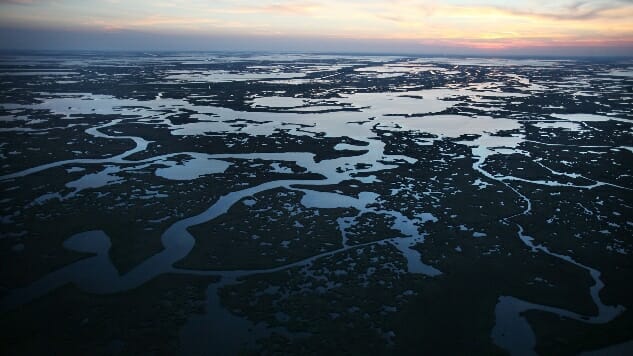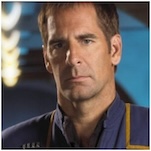Leaking for Over a Decade, Hushed Gulf of Mexico Oil Spill Could Become Worst in American History
Photo by Mario Tama/Getty
An oil spill in the Gulf of Mexico has gone unfixed for so long that it could become one of the worst offshore disasters in United States history, as first reported by The Washington Post.
Since 2004, when an oil-production platform owned by Taylor Energy collapsed during Hurricane Ivan, between 300 and 700 barrels of oil per day have contaminated the gulf mere miles from the Louisiana coast. Even today, many of the wells have not been capped, and federal officials predict that the spill will continue through the century. If not stopped, the Taylor spill could surpass BP’s Deepwater Horizon disaster as the worst our nation has known.
As the crude continues to flow into the Gulf, the Trump administration is proposing the largest expansion of oil and gas leases. The plans include growth in the Atlantic coast—where there has been no drilling in over half a century, and where hurricanes hit twice as often as they do in the Gulf.
In 1995, Taylor Energy took over a massive oil-production platform, originally operated by BP. By massive, we’re talking like 40-stories-tall massive. Then, on Sept. 15, 2004, Hurricane Ivan hit the Gulf with 145 mph winds and waves that topped 70 feet. The Category 4 storm shook the underwater floor, and the platform and barrels of oil stacked on its deck fell with the shifting ground.
Taylor Energy reported the spill to the Coast Guard, which monitored the site for more than half a decade without telling the public. Four years after the leak started, in July 2008 documents made available by a lawsuit, the Coast Guard informed the Taylor Energy that the spill was “a continuous, unsecured crude oil discharge” that posed “a significant threat to the environment.”
Taylor Energy made a deal with federal officials to establish a $666 million trust to stop the spill. The contractors were asked to find the wells through vision-impairing mud and debris, and cap them. Taylor Energy was forbidden from drilling through the mess to avoid striking a pipe or well that would make things even worse, a precaution that slowed the operation. The company spent a fortune plugging a third of the wells and keeping the spill from rising, but the oil continued to leak.
Due to the company’s efforts to keep the scandal under wraps, the Taylor Energy spill is still largely overlooked outside the state of Louisiana. In fact, the spill was hidden for six years before environmentalists stumbled upon it while monitoring the BP Deepwater Horizon disaster, which occurred a few miles north of the Taylor site in 2010.
-

-

-

-

-

-

-

-

-

-

-

-

-

-

-

-

-

-

-

-

-

-

-

-

-

-

-

-

-

-

-

-

-

-

-

-

-

-

-

-








































